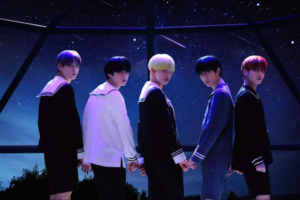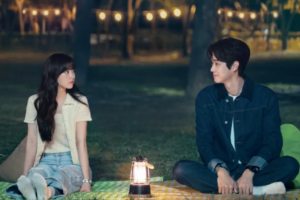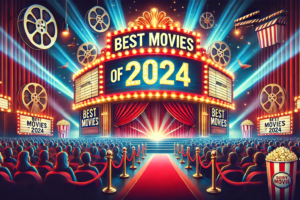The Revival of Classic Film Formats: The Role of 70mm in Today’s Long-Form Cinema
In the world of modern filmmaking, where digital technology reigns supreme, there’s a growing trend that harks back to the golden age of cinema: the revival of the 70mm classic film format. This resurgence is particularly evident in long-form cinema, where directors are embracing this classic format to bring a new level of depth, texture, and visual grandeur to their storytelling. One film that has garnered significant attention in this regard is “The Brutalist,” directed by Brady Corbet. Premiering at the Venice Film Festival 2024, this post-WWII epic not only wowed audiences with its story but also its technical brilliance, shot entirely on 70mm film. In this blog, we’ll explore how 70mm film is making a comeback in modern cinema, particularly in epic dramas like “The Brutalist,” and why this format continues to captivate both filmmakers and audiences alike.
70mm Film Format: A Cinematic Experience Like No Other
The 70mm film format, originally developed in the 1950s, was designed to offer a more immersive viewing experience with a wider, sharper image. Unlike the standard 35mm film, 70mm film boasts a higher resolution, which allows for stunning visual clarity and more detailed imagery. This format became synonymous with epic films like “Lawrence of Arabia” and “2001: A Space Odyssey,” where the vast landscapes and intricate details played a crucial role in the storytelling.
In today’s digital age, where most films are shot on digital cameras and projected in digital theaters, the choice to shoot on 70mm is both a bold and nostalgic move. It signals a desire to return to a more tactile, organic form of filmmaking, where the physicality of the film stock adds a unique texture to the visual experience. For Brady Corbet, this choice was essential in bringing “The Brutalist” to life, as the film’s epic scope and historical setting demanded a format that could truly do justice to its grand vision.
“It feels grander and more accurate to the color that a director and colorist and all the engineers are working to achieve,” Corbet remarked in an interview(Film Stage). The result is a film that not only tells a compelling story but does so in a way that is visually striking and emotionally resonant.
Epic Dramas in 2024: The Return of the Long-Form Cinema
“The Brutalist” is not the only film in 2024 that has embraced the 70mm format. This year has seen a resurgence of epic dramas that take full advantage of the format’s capabilities. These films, often running over three hours, are a throwback to an era when cinema was not just about storytelling but about creating an experience—one that fully immerses the audience in the world of the film.
Long movies have always had a place in film festivals, where audiences are more willing to engage with ambitious, challenging works. The Venice Film Festival, in particular, has become a showcase for such films. In 2024, the festival featured several long-form epics, but none received as much attention as “The Brutalist,” which garnered a 13-minute standing ovation—a testament to the power of its storytelling and the impact of its 70mm presentation(World of Reel).
The return of long-form cinema, especially in formats like 70mm, is not just a trend but a statement. It’s a rejection of the fast-paced, disposable content that dominates much of today’s media landscape. Instead, these films demand patience and attention, rewarding viewers with a deeper, more enriching cinematic experience.
Post-WWII Movies: A Rich Vein of Historical Storytelling
The post-WWII period is a fertile ground for filmmakers, offering countless stories of rebuilding, redemption, and the search for identity. “The Brutalist” taps into this rich vein of historical storytelling by following the journey of an immigrant architect who flees Europe to rebuild his life in America. The film’s focus on modernist architecture serves as a metaphor for the broader themes of reconstruction and renewal that defined the post-war era.
Modernist architecture, with its emphasis on simplicity, functionality, and the rejection of ornamentation, mirrors the emotional and psychological rebuilding that the characters in the film undergo. The use of 70mm film amplifies this theme, allowing the audience to fully appreciate the stark, geometric beauty of the modernist structures that the protagonist designs.
Films like “The Brutalist” highlight the enduring appeal of post-WWII narratives in cinema. These stories resonate because they deal with universal themes—loss, resilience, and the quest for a new beginning. By presenting these stories in a visually compelling format like 70mm, filmmakers can create a more profound emotional impact, drawing audiences into the world of the characters and making their struggles feel all the more real.
Standing Ovations at Venice: The Power of Cinematic Mastery
The Venice Film Festival is known for its prestigious line-up of films and its discerning audiences. Receiving a standing ovation at Venice is a mark of high praise, indicating that a film has resonated deeply with viewers. “The Brutalist” was one of the standout films at the 2024 festival, earning a 13-minute standing ovation—a clear sign that it had struck a chord with the audience(World of Reel).
What makes a film worthy of such a response? It’s a combination of factors: a compelling story, strong performances, and, crucially, a mastery of the cinematic form. In the case of “The Brutalist,” it was the meticulous attention to detail in every aspect of the production—from the historical accuracy of the setting to the choice of shooting on 70mm film—that elevated the film to the level of a masterpiece.
Standing ovations at film festivals are not just a form of appreciation but a way of acknowledging the hard work and creativity that goes into making a film. They signal to the world that this is a film worth watching, discussing, and remembering.
The Influence of Modernist Architecture in Cinema
Modernist architecture has long been a source of inspiration for filmmakers, particularly those interested in exploring themes of alienation, identity, and the search for meaning in a rapidly changing world. The clean lines, open spaces, and functional design of modernist buildings provide a visual language that filmmakers can use to convey the inner lives of their characters.
In “The Brutalist,” modernist architecture is not just a backdrop but a central element of the story. The protagonist’s journey as an architect mirrors the evolution of modernist design, from its roots in post-war Europe to its adoption in America. The film’s use of 70mm film enhances this connection, allowing the audience to fully appreciate the scale and beauty of the modernist structures that dominate the screen.
This relationship between architecture and cinema is not new, but it is particularly striking in “The Brutalist.” By using modernist design as a metaphor for the characters’ emotional states, the film creates a powerful visual narrative that adds depth and complexity to the story.
Brady Corbet Movies: A Director’s Unique Vision
Brady Corbet is a director known for his bold choices and distinctive style. His previous films, including “Vox Lux” and “The Childhood of a Leader,” have garnered critical acclaim for their ambition and originality. With “The Brutalist,” Corbet has once again demonstrated his commitment to pushing the boundaries of cinema.
One of the hallmarks of Corbet’s work is his use of visual and narrative experimentation. In “The Brutalist,” this is evident in his decision to shoot on 70mm film, a choice that adds a layer of authenticity and grandeur to the film. Corbet’s films are not just stories; they are immersive experiences that challenge the audience to engage with the material on a deeper level.
Adrien Brody, who stars in “The Brutalist,” is a frequent collaborator with Corbet. Their partnership is a testament to the director’s ability to draw powerful performances from his actors. Brody’s portrayal of the immigrant architect is both nuanced and compelling, capturing the complexity of a man caught between two worlds.
The Future of Long Movies in Film Festivals
As we look to the future, it’s clear that long movies will continue to have a place in film festivals, particularly those that prioritize artistic excellence over commercial appeal. Films like “The Brutalist” demonstrate that there is still an appetite for ambitious, challenging cinema that takes risks and pushes the boundaries of the medium.
The Venice Film Festival, with its long history of showcasing innovative and groundbreaking films, is the perfect platform for these works. As filmmakers continue to explore new ways of storytelling, we can expect to see more films that take full advantage of formats like 70mm, offering audiences a cinematic experience that is both visually stunning and emotionally resonant.
The Enduring Appeal of 70mm Film and Epic Dramas
In a world where digital technology dominates, the revival of 70mm film in epic dramas like “The Brutalist” is a reminder of the power of cinema to transport, inspire, and move audiences. This classic format, with its rich history and unparalleled visual quality, continues to captivate filmmakers and viewers alike. As long as there are stories to be told, there will be a place for 70mm film and the epic dramas that bring these stories to life.
For more insights into the art of filmmaking and the impact of cinematic techniques, check out our comprehensive resources at Regent Studies. Whether you’re a budding filmmaker or a seasoned cinephile, there’s always something new to learn about the world of cinema.




